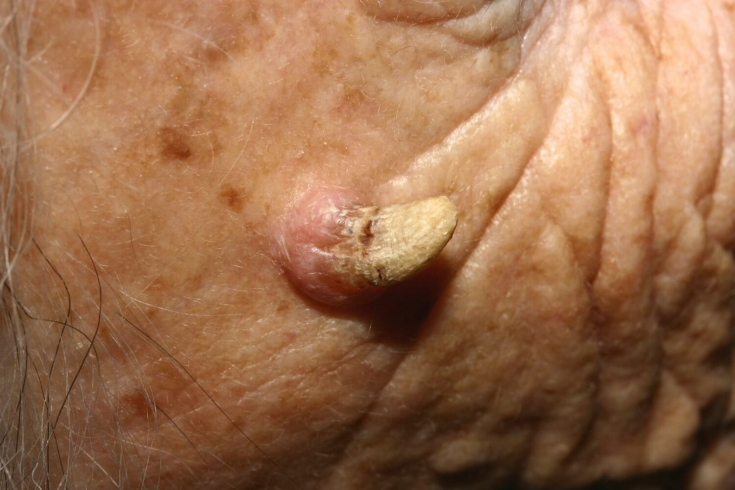Against the background of violations of the structure or functioning of the components of the dermis, on the skin neoplasmscan be formed, which are different in size, color and risk of malignancy. With a violation in the stratum corneum of the epidermis, a skin horn appears on the skin.
A horn is a neoplasm on the skin that consists of horny cells. The name comes from the typical shape of the element on the skin. Such education can develop both independently and against the background of other diseases. Read more on estet-portal.com causes, signs and treatments of skin horn.
- Predisposing factors and causes of skin horn formation
- Mechanism of development of primary and secondary hyperkeratosis in cutaneous horn
- Appearance and tactics of treatment of cutaneous rhoha
Predisposing factors and causes of skin horn formation
To date, experts have not fully formulated the exact causes of the formation of a skin horn.
It is believed that the cause is disturbance of cellular kinetics, which consists of several factors:
- acceleration of mitosis in cells;
- acceleration of the process of migration on the surface of skin cells that are filled with keratin;
- accelerated physiological death of skin cells, due to heredity.
Each of the above factors can cause adaptive changes in the skin, which are manifested by the formation of proliferative acanthosis. At the same time, the number of epidermal cells increases due to their excessive growth.
Read also: Congenital and acquired diseases of the skin, sweat and sebaceous glands in childhood
If several factors are combined, then this is a trigger for proliferative hyperkeratosis, which contributes to the development of an independent skin disease, which is called skinth horn.
Mechanism of development of primary and secondary hyperkeratosis in cutaneous horn
Both external and internal processes can contribute to the development of the skin horn. If horny, granular and spiny layers of the skin grow in the skin layers, they become loose, as they increase the number of intercellular contacts that no longer have a connection with tocofilaments.
Against this, soft areas are formed. Those areas of the dermis that are not affected by the pathological process are compensatoryly embedded in the dermis, and this contributes to horn formation.
As the process progresses, new products of pathologically altered cellular kinetics are deposited on such areas of the skin. This is how the primary proliferation of the dermis.
In addition to the primary, there may be secondary hyperkeratosis. Secondary hyperkeratosis is characterized by the presence of an inflammatory process, the intensity of which determines the rate of growth of the skin horn, as well as the possibility of its transformation.
External and internal factors provoke damage to skin, in which biologically active substances are ejected from the cells into the surrounding tissues.

These substances change the acid-base balance of the skin in the acidic direction. Acidosis contributes to increasing the permeability of the vessel walls, and the fluid from them penetrates into the tissues around the base of the primary horn.
Read more of our content on Facebook!
This provokes an even greater increase in exudation, to which the vessels react according to the feedback principlezi.
Appearance and tactics of skin horn treatment
Outwardly, the growth resembles a biker's spike. The cutaneous horn has clear boundaries, the growth is dense to the touch, the surface is striated and dark in color. The size of the skin horn can be different – from a few millimeters to 10 or more centimeters. An erythematous inflammatory rim is present around the base. The neoplasm is often cylindrical.
In most cases, the skin horn is single, however, in medical practice, there have been cases of the presence of several skin horns in one patient. More common in older people. It is possible to form a skin horn on the mucous membrane.
The presence of a skin proliferation is a reason for histological examination in order to exclude the malignancy of the process.
See also: How phagocyte activity changes in acne
Only after a histological examination, surgical removal of the skin horn is carried out by wide excision of the neoplasm, or destruction by physical methods is used.
For the prevention of skin horn, experts recommend do not exposeexposed skin to prolonged sun exposure, as this contributes to its damage.
Watch interesting videos on our YouTube channel:







Add a comment